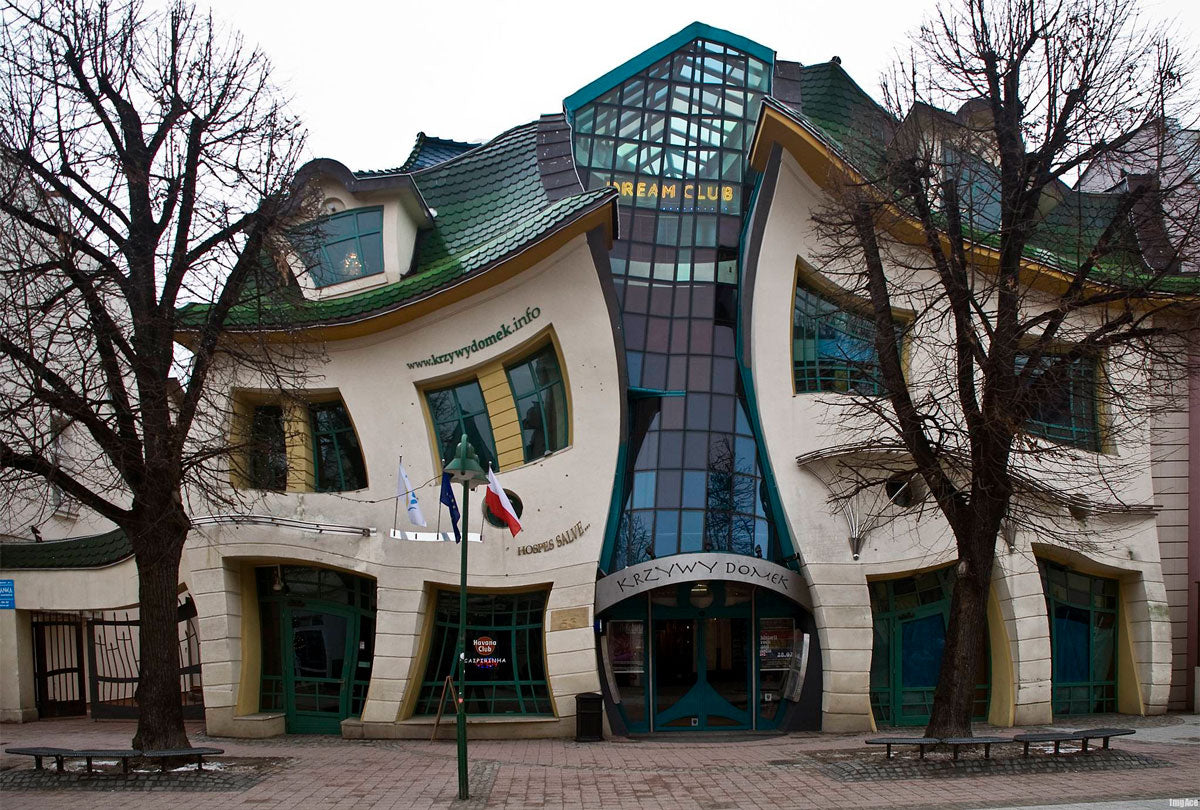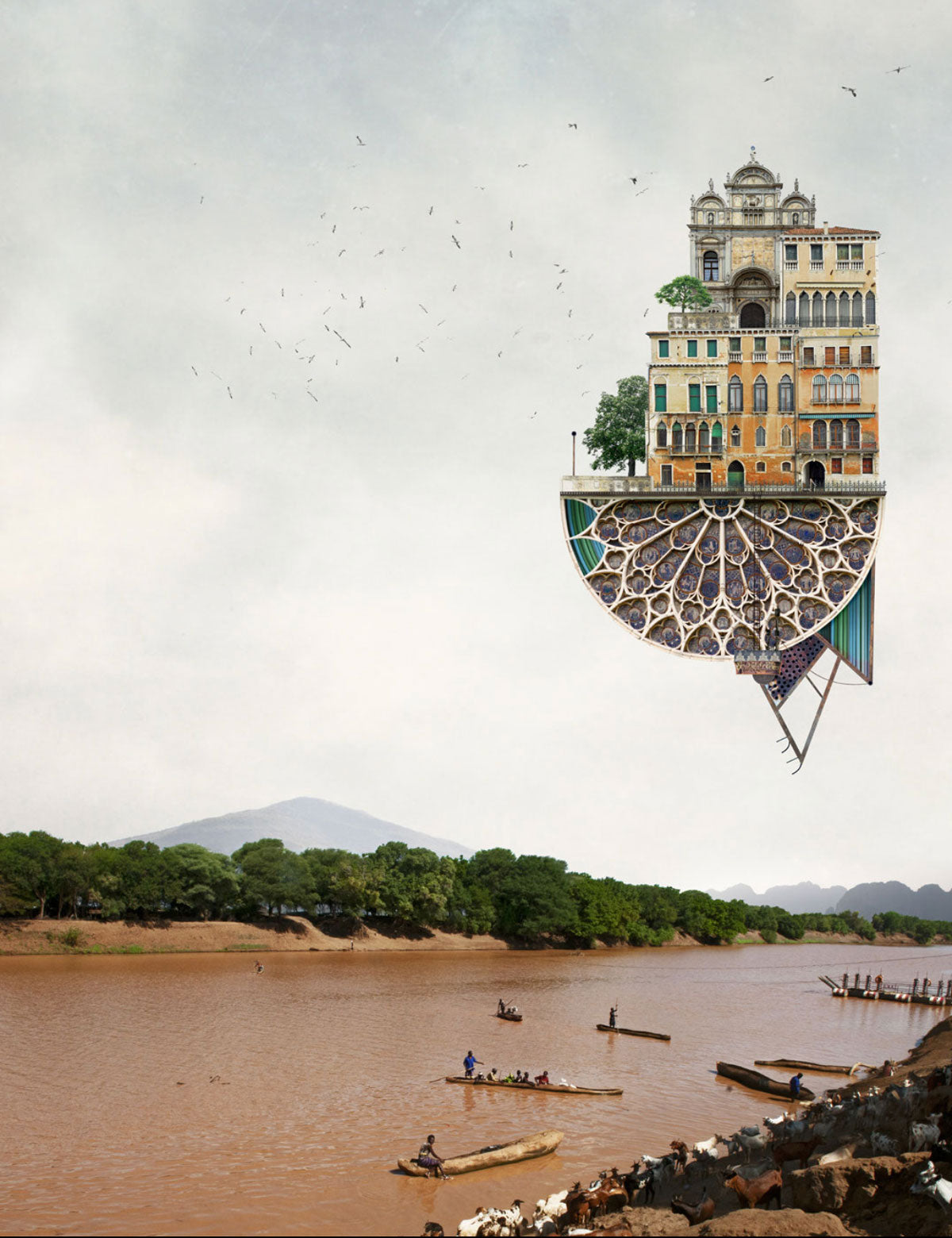Constructions that seem to be old as time and not quite for the state they are in, instead, we have seen them or something similar before… Something like the curves in dreams that exalt the meaning of surrealism.
After World War I, the need to express what is in the subconscious mind emerges in France, to take dreams into reality and it was reflected (mainly) in literature and painting. However, the movement managed to overcome the limits of its own logic and reached architecture. Buildings that seem to melt, float, be upside down, or simply from another world, rise today thanks to the dreamy minds from the time.
From French surréalisme..
-
n. Artistic and literary movement initiated in France in 1924 with André Breton’s manifesto and which tries to overcome reality by stressing the irrational and oneiric through the automatic expression of thinking or the subconscious (RAE)
André Breton is considered to be father of the movement, since he published the first manifesto of surrealism in 1924 (under the name that describes it). In it, he showed the purpose of the current and its attempt to separate from what was considered normal, while the schemes of reason were put to the test.
Surrealism is pure psychological automatism through which the actual function of thought pretends to be expressed verbally, in writing, or in any other way; the pure thought flow without any control from reason and out of all esthetic or moral prejudice.
For Breton, Sigmund Freud, psychoanalyst par excellence, had a fundamental importance on the way to surrealism, leaning towards analyzing the world of dreams to reconstruct personality. Both ideals have the purpose of discovering the depth of the unconscious.
Surrealism has had a special effect on architecture, although other movements have also been characterized for leaving the standard (like Modernism) but following the logic, Surrealism proves that something impossible is not what it seems.
Salvador Dalí, one of Surrealism greatest exponents, had a deep admiration for Antonio Gaudí (Spanish architect and the greatest representative of Modernism), who in spite of being around for only a couple of years during the development of the vanguard (he died in 1926), is considered a strong influence. So much so that the artist decided to speak about him in the Minotaure magazine with the feature “De la beauté terrifiante et comestible de l'architecture Modern Style” (The terrifying and edible beauty of modern style architecture), where he describes architecture with a modern style as the most tangible and delirious aspiration of hyper materialism. The purpose of the piece was to defend the architect, who was criticized at the time by modernists and to offer a glimpse of his work to surrealists.
Many works related with Surrealism have become cultural centers and tourist attractions, like Krzywy Domek, a building located in Sopot, Poland. Created by architects Zaleski and Szotyński, the Crooked House was made thanks to the comic books by Jan Marcin Szancer and Per Dahlberg, who served as inspiration for the project.

Alex Chinneck elevates the sense of the movement by designing the façade of a house in the coastal city of Margate, England. Elaborated in an abandoned house for 11 years, from which the façade was taken and leaving the upper floor exposed, the rest of the work was put into place, creating a melting optical illusion to the eyes of the spectator. The idea emerges from the common pleasures of humor, theater, and illusion.

Le Palais Idèal is a “never say never” example, the story revolves around Ferdinand Cheval, a mailman who one day during his route tripped on a rock that captivated him for its strange shape and inspired him to build the palace of his dreams. With no experience in architecture and accompanied by the criticism of his neighbors, Cheval spent 34 years in building his dream and he managed to finish it because every day, while he delivered the mail in his route, he carried a wheelbarrow to collect rocks for the building.

Today, this vanguard can be seen reflected in a collage and architecture combination, like Matthias Jung, for example, whose work is defined by short poems on architecture and who is impossible to be seen another way, thanks to his colors, landscapes, and shapes, which transport the spectator to a fantastic world.
Jung has become one of the main references of Surreal architecture of the moment and his work employs many references to nature and are a kind of protest, since he also analyzes the way in which we live today.

Dariusz Klimczak is a photographer, who in his Patterns series shows a raw version of the being, also, the exhibition shows architecture and landscapes mixed in one setting. The current can be appreciated from the beginning and almost without noticing it, black and white poetry can be appreciated, detailing the importance of time and forgetfulness in the form of gloom, in an almost symmetrical image.



